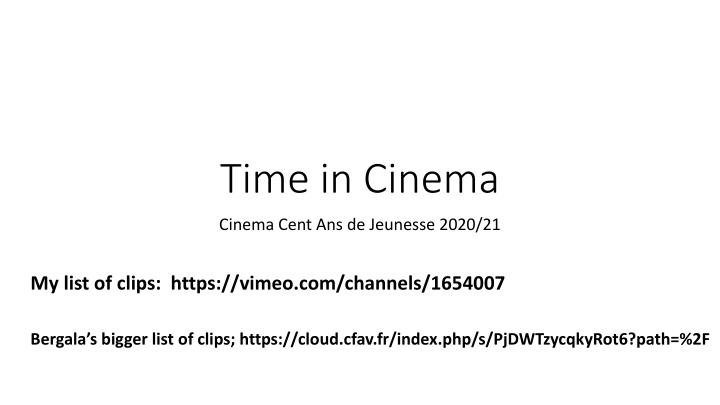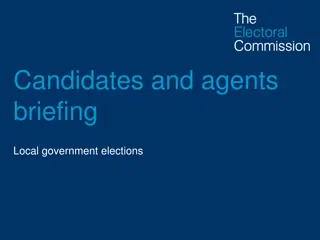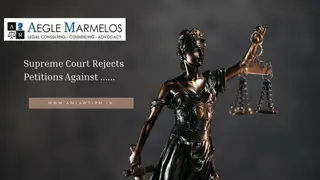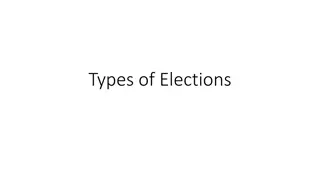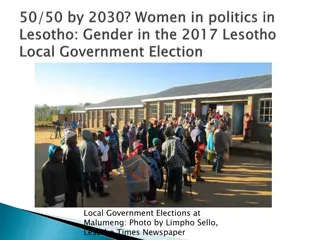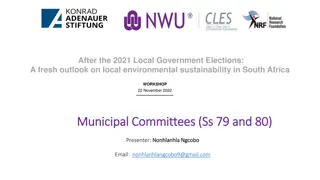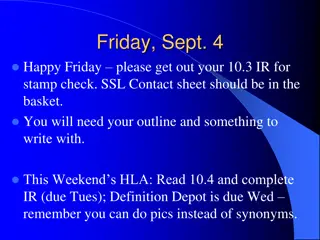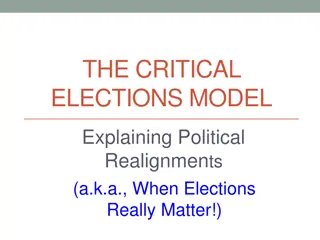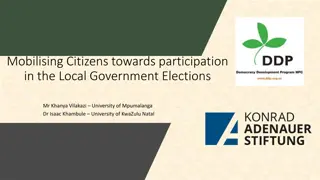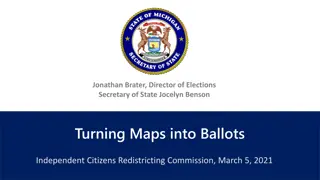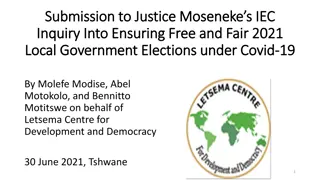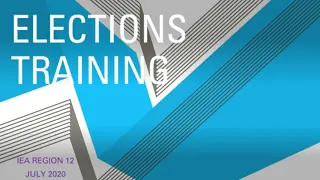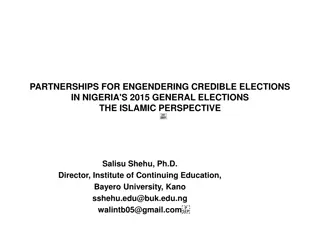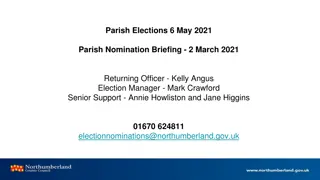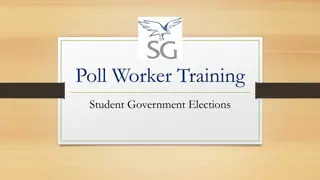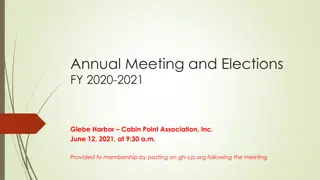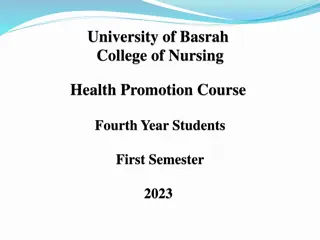2021 Local Government Elections Communication Strategy Phases
A detailed communication strategy for the 2021 local government elections, focusing on stakeholder engagements, voter education, media mobilization, and key messages to mobilize South Africans for voting. The strategy includes collaboration with various key stakeholders such as the Independent Electoral Commission (IEC), Government Communication and Information System (GCIS), Home Affairs, COGTA, Municipal Demarcation Board, and NYDA. The communication plan is divided into three phases: Pre-Elections, During Elections, and Post-Elections, each with specific objectives and actions to ensure successful and secure elections.
Download Presentation

Please find below an Image/Link to download the presentation.
The content on the website is provided AS IS for your information and personal use only. It may not be sold, licensed, or shared on other websites without obtaining consent from the author.If you encounter any issues during the download, it is possible that the publisher has removed the file from their server.
You are allowed to download the files provided on this website for personal or commercial use, subject to the condition that they are used lawfully. All files are the property of their respective owners.
The content on the website is provided AS IS for your information and personal use only. It may not be sold, licensed, or shared on other websites without obtaining consent from the author.
E N D
Presentation Transcript
Time in Cinema Cinema Cent Ans de Jeunesse 2020/21 My list of clips: https://vimeo.com/channels/1654007 Bergala s bigger list of clips; https://cloud.cfav.fr/index.php/s/PjDWTzycqkyRot6?path=%2F
Time in Film and in Print: differences and similarities?
Film is a time-based medium first and foremost; before the image and sound there is time Film is structured around duration Time in Cinema: some key concepts Film-makers often use temporal markers to structure their stories Time is imprinted on film, in movement, for example The temporal rhythms of film are created through editing and shot length
Early film: what they discovered about film time Lumi re Bros: Arrival of a Train; Washerwomen on the Seine; A Tour of the Grand Canal; Exiting the Factory Gates: Lumi res first fiction: the Sprinkler Sprinkled Alice Guy Blach : Serpentine Dance https://vimeo.com/channels/1654007
The first discovery of time in cinema: the moment in time lived for real . And the second discovery: that the time of the tale isn t the same as the time it takes to tell. Sometimes we can find different time- frames in the same shot DURATION
Nostalgia, Andrei Tarkovsky, , 1983 DURATION https://vimeo.com/channels/1654007 A Sunday Morning, Damien Manivel, 2012
Temporal markers Temporal markers how many can you name?
Temporal markers The Green Ray, Eric Rohmer, 1986 El Sur, Victor Erice, 1983 Madame de , Max Ophuls 1953
Five types of film time
Five types of film time Scene
Simultaneous time
The long take: two types
Rules of the Game Exercise 1 Following the suggestions below, make three shots exploring the notion of time in terms of how long the shot runs, each film being up to a maximum of two minutes in length. Shot 1: Shot 2: something over which the filmmaker has no control, and which creates a tension against another action: countdown shots are perhaps the most obvious example of this, where a character is put under time pressure) Shot 3: Capture a physical transformation or change, which takes place over the duration of the shot. A record of time, recording the continuity of an action or the visible imprint of time . A recording which captures dynamic tension linked to the duration of the shot. (eg, filming Each of these exercises can be done individually (outside of class) or in a group during the workshop. Ideally, Shot 1 will be the work of the participants on their own, and the other exercises performed in groups.
Rules of the Game Exercise 2 Film the same action / situation in 2 different ways: One: which lasts the length of the action. A single long take, where the action is not cut at all, everything is captured in one continuous take Two: Film the action / situation through a number of shots and then cut and edit them together. Sound must be a vital component of this exercise. The location, movement and any dialogue must be remain the same between the two variations, only the actors can be different. It s important to see this as film of an action or actions, rather than a long take of a scene or setting in which there is no story action. Maximum 3 minutes of length for each version.
Rules of the Game Final Film Make a film that mixes showing and telling . Particular attention will be paid to the rhythm of the film, which must include one or more changes of pace. Sometimes the scenario of the film will be set aside so that the character (or the viewer) experiences the sensation of time passing. 10 mins maximum excluding credits.
